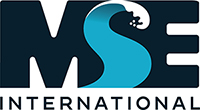PERISCOPE Blue Growth Innovation Survey results released
Posted 2020-03-30 15:05:19 by Admin
 The survey was completed by over 100 organisations and the conclusions clearly point towards an innovative sector, although some resource challenges and other issues were highlighted.
The survey was completed by over 100 organisations and the conclusions clearly point towards an innovative sector, although some resource challenges and other issues were highlighted. 80% the organisations reported that they do have an innovation or business development strategy, and even more impressive, 90% say they have engaged in innovation and business development activities during the last three years.
Half of the respondents claim to have made important or major breakthrough product innovations, whereas 4 out of 10 have achieved innovations in service products. Production process innovations, business model innovations and other forms of innovations were reported to be less important.
4 out of 10 have created new products/services for new markets, but only 15% have created entirely new business areas. Most organisations do either incremental product/service improvements or new products/services for existing markets, and overall 2 out of 10 have registered new patents.
The research noted that markets and great ideas from staff triggered most innovations with competitors not listed as being the main driver for innovation and business development work.
The research found that in the main innovation capacity is limited by financial resources with half of the respondents indicating that the cost of innovation and business development is among the most pressing issue. 36% of the respondents also list finding pilot customers as a barrier, which could indicate the need to get paid for innovation and business development. It could also imply that many organisations, like in the oil & gas sector, customize products for customers.
Access to skilled staff and experienced managers was also listed as a issue and many organisations felt sceptical about external collaboration when innovating. Five in ten
organisations say that the biggest barriers to engaging in external interaction are lack of sufficient time or financial results and, and secondly, loss of control over valuable knowledge and difficulty finding the right partner.
Technology, access to test facilities, access to maritime space, lack of public support, regulations and permits do not seem to be major stumbling blocks for the innovation capacity of the organisations.
The high cost of co-funding, red tape and financing alternatives not matching the real needs are listed as the most important limiting factors to get financing. Grants seem to be a path many organisations have taken, with organisations preferring local, regional, and national grants over the EU grants. The challenging aspects of applying to both local/regional/national and EU grants are the same for the majority of the organisations. The application procedures and internal aspects, such as project administration and reporting plus own co-funding, are the most relevant barriers to grants.
As the Periscope project is seeking to accelerate emerging blue market opportunities, the survey tested the interest of organisations for an open innovation platform to interact with other market players and stakeholders providing grants. 55% supported idea of a platform to be an independent digital market where the organisations can search for and procure external expertise and solutions.
From a societal point of view, the organisations´ sustainability efforts appear to be sales and market driven. The most relevant matters are Company philosophy and values (68%), Market growth opportunities (49%), customer / consumer demands (41%) and reputational risks / benefits (38%). The report also noted that 3 out of 10 organisations rate sustainability efforts as a key aspect to attract talented workers.
Climate change, health & safety / wellness, plus ethics and integrity (including anti-corruption efforts) are the top three sustainability priorities over the next three years.
For a full copy of the report please contact :
Stig Marthinsen
Managing Director
tel (+47) 400 74 750
e-mail sm@south-norway.no
Maria Paula Arenas Henriquez
Research manager
tel (+47) 46 12 16 64
e-mail mpa@south-norway.no


